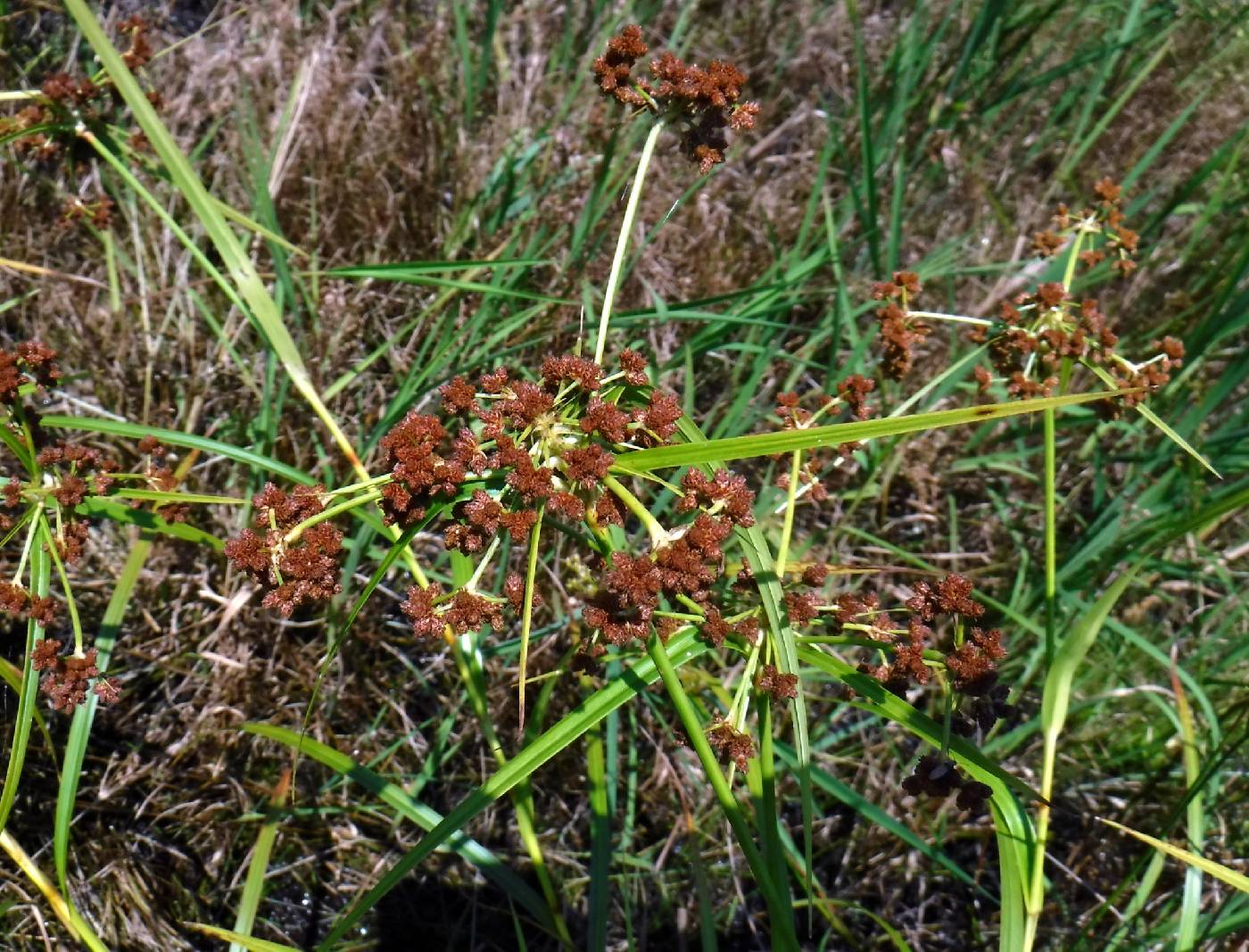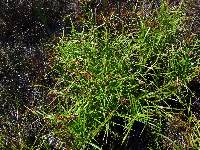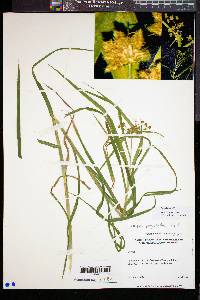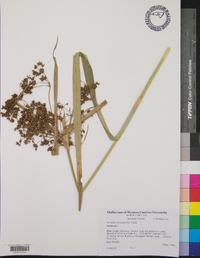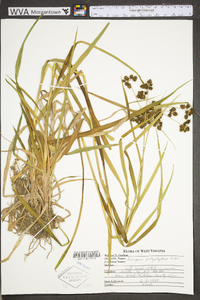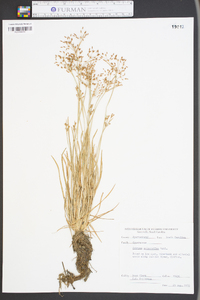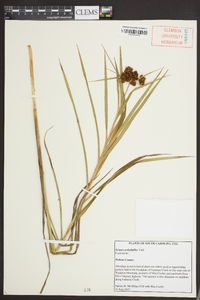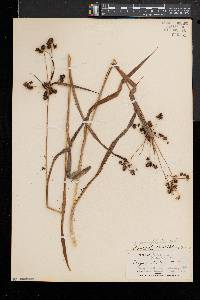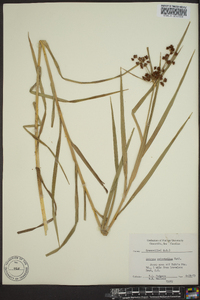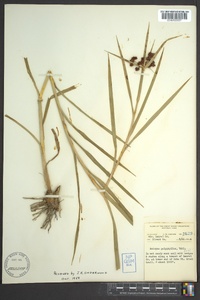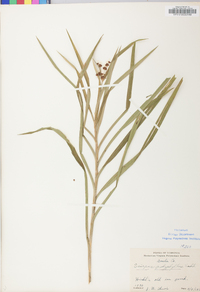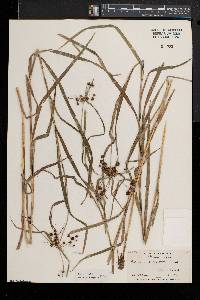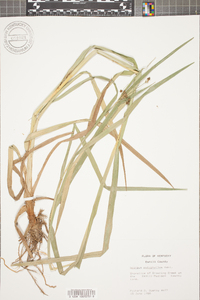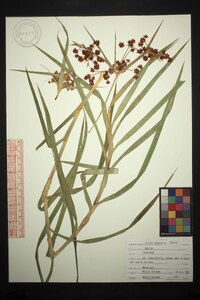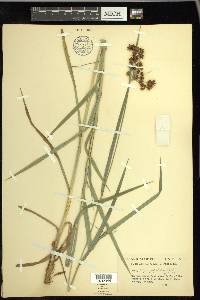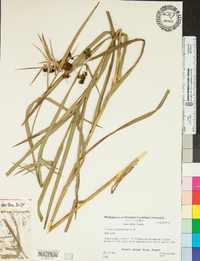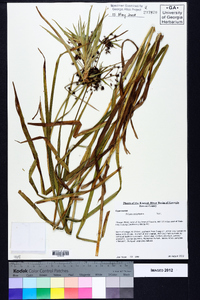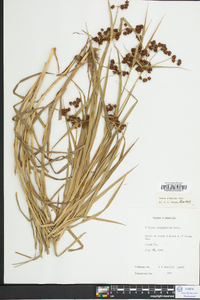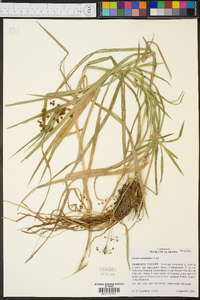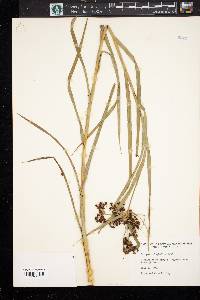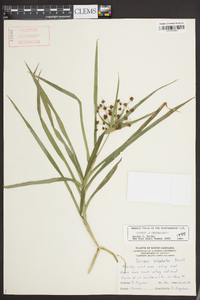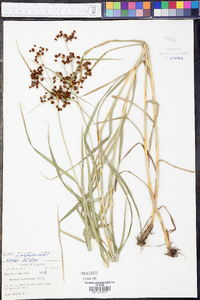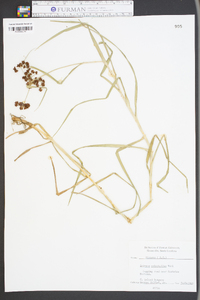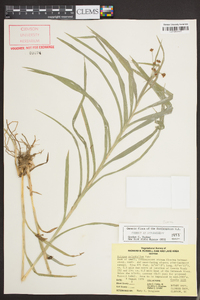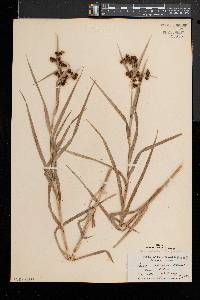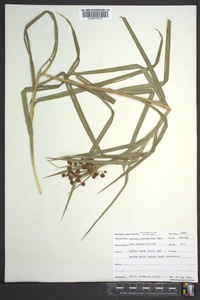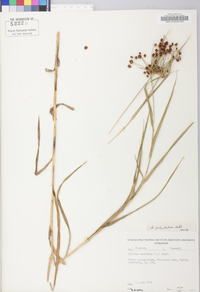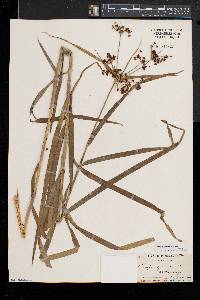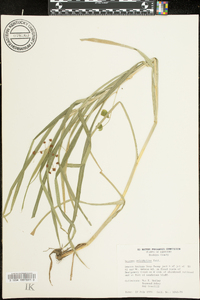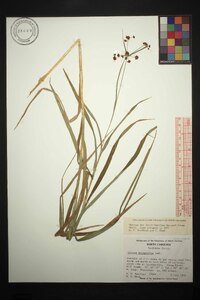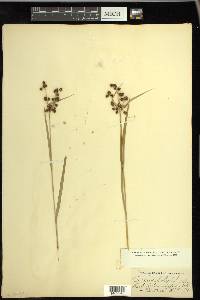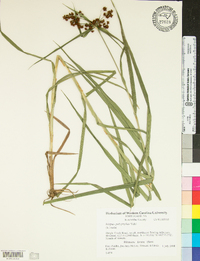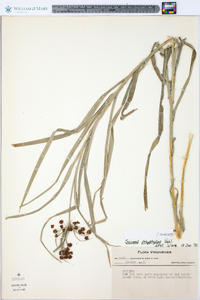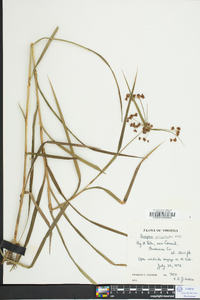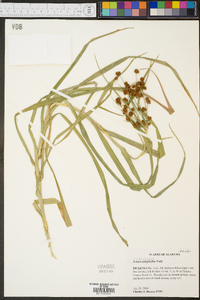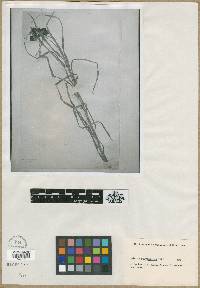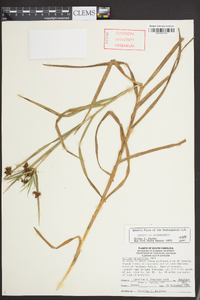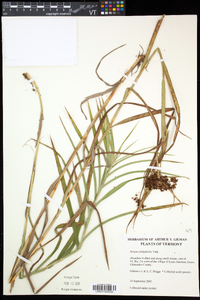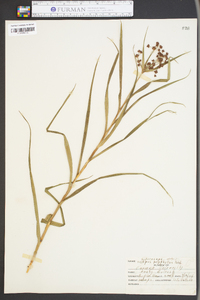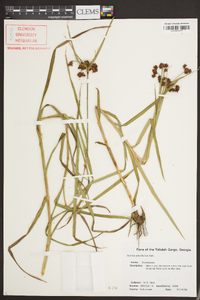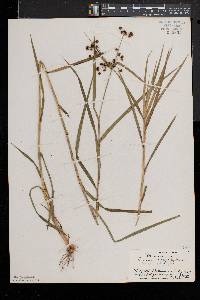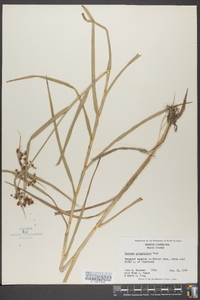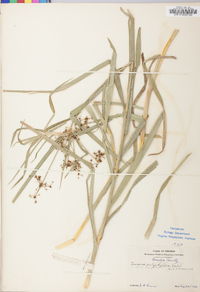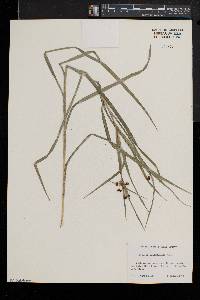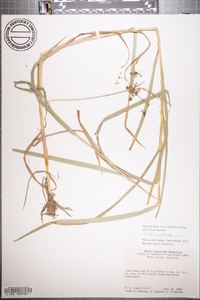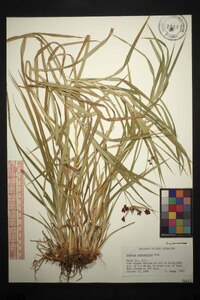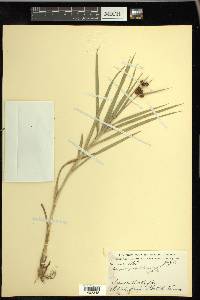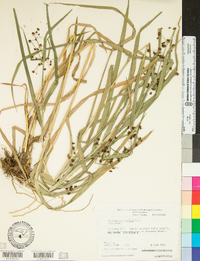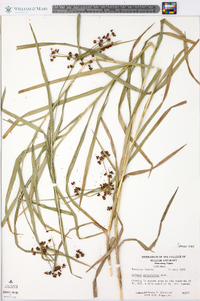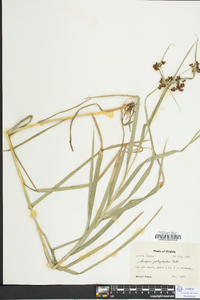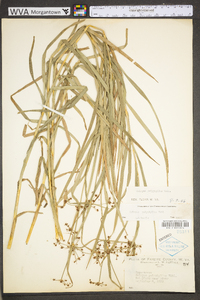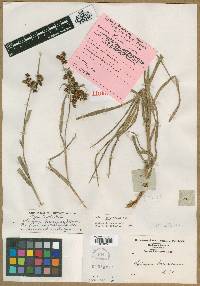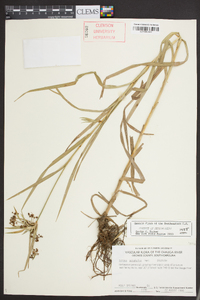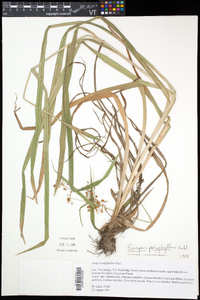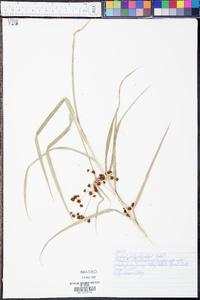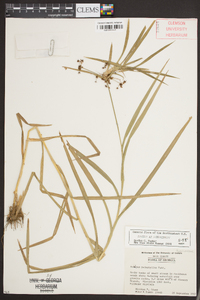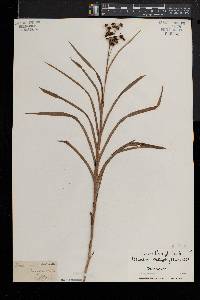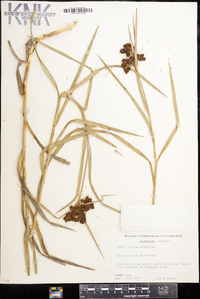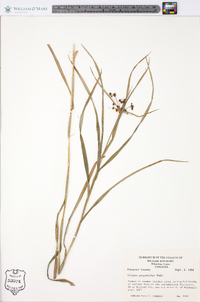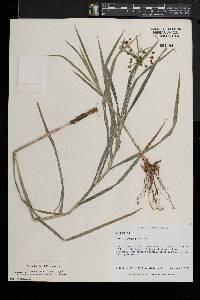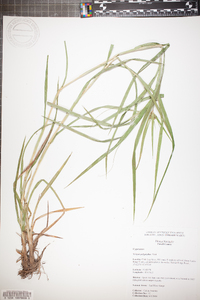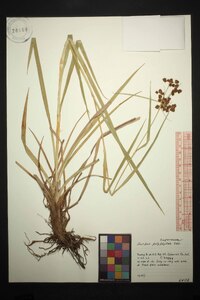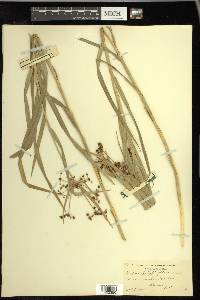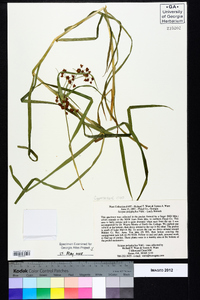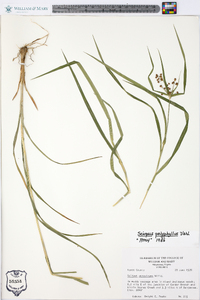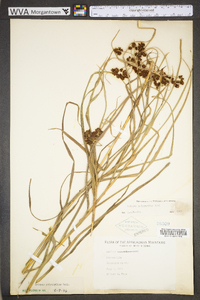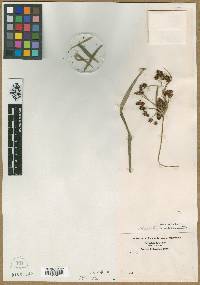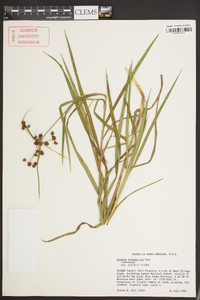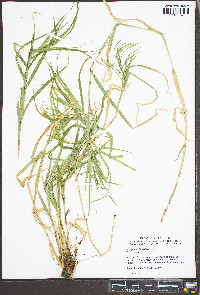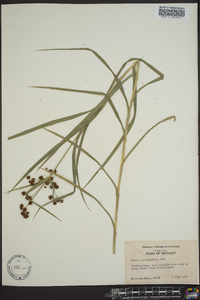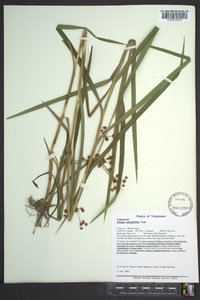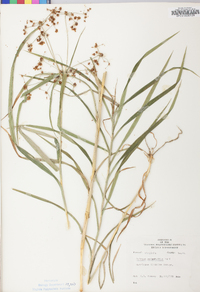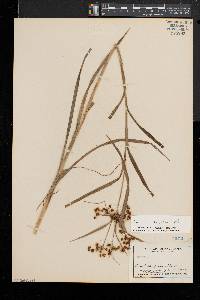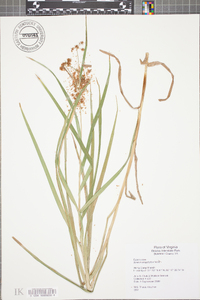Scirpus polyphyllus
|
|
|
|
Family: Cyperaceae
Leafy Bulrush
|
Plants cespitose; rhizomes short, tough, fibrous. Culms: fertile ones erect or reclining; nodes sometimes with axillary bulblets. Leaves 14-22(-26) per culm; sheaths of proximal leaves green or brownish; proximal sheaths and blades with septa usually few, inconspicuous; blades 16-31 cm × 5-8 mm. Inflorescences terminal, rarely also with 1 lateral inflorescence from distal leaf axil; rays divaricate, smooth throughout or scabrous distally, rays usually with axillary bulblets; bases of involucral bracts green, not glutinous. Spikelets in dense clusters of 3-9 (largest cluster with 6 or more), spikelets sessile, broadly ovoid, 2.5-4 × 1.6-3 mm; scales reddish brown with green midribs, circular or nearly so, 1-1.5 mm, apex mucronate or occasionally short-awned, mucro or awn 0.2-0.3 mm. Flowers: perianth bristles persistent, 6, stout, contorted, much longer than achene and projecting beyond it, retrorsely barbed in distal 1/2, exserted from scales at maturity; styles 3-fid. Achenes pale brown, obovate or nearly obtriangular in outline, plumply trigonous or plano-convex, 1.1-1.4(-1.8) × 0.8-1 mm. 2n = 58. Fruiting summer (Jul-Aug). Along wooded streams and other swampy places, usually shaded by trees; 0-1000 m; Ala., Ark., Conn., D.C., Ga., Ill., Ind., Ky., Md., Mass., Miss., Mo., N.H., N.J., N.Y., N.C., Ohio, Pa., S.C., Tenn., Vt., Va., W.Va. Scirpus polyphyllus occasionally hybridizes with S. atrovirens.
Perennial herb with short, tough rhizomes, tufted to 1.5 m tall Leaves: three-ranked, 10 to 22 per culm. Sheaths of lower leaves green or brown. Blades 15 - 30 cm long, 3 - 8 mm wide, keeled beneath. Inflorescence: a large arrangement of spikelets, terminal, rarely also lateral (usually just one), widely two- or three-branched (which often bear bulblets), subtended by three leaf-like bracts. Bracts green basally. Flowers: minute, subtended by a floral scale, lacking sepals and petals, bearing six persistent bristles. Bristles stout, contorted, much longer than achene, bearing small barbs on upper half, growing past the scales at maturity. Stamens one to three, exserted. Pistil one. Style linear, three-cleft, base persistent. Fruit: a one-seeded achene, light brown, 1 - 1.5 mm long, to 1 mm wide, reverse egg-shaped or nearly reverse triangular, plumply three-sided or flat on one side and convex on the other, minutely bumpy. Culm: to 1.5 m long, three-sided, solid. Spikelets: in dense clusters of three to nine, stalkless, 2.5 - 4 mm long, 1.5 - 3 mm wide, widely egg-shaped. Floral scales spirally arranged, reddish brown with a green midrib, 1 - 1.5 mm long, more or less circular with a rounded apex that bears a tiny point (or sometimes an awn). Similar species: No information at this time. Flowering: July to September Habitat and ecology: Probably extirpated from the Chicago Region. Occurence in the Chicago region: native Etymology: Scirpus comes from the Latin name for a bulrush. Polyphyllus means many-leaved. Author: The Morton Arboretum Cespitose perennial from short rhizomes; stems to 1.5 m, sometimes with nodal bulblets; lvs 10-20, the main blades 3-8 mm wide; infl widely twice or thrice branched, usually with bulblets at base; spikelets broadly ovate, 3-4 mm, sessile in numerous small glomerules; scales rotund, mucronate, with conspicuous green midstrip and red-brown or red-purple sides; bristles 6, brown, surpassing the achene, straight and smooth below, contorted and retrorsely barbellate above; style trifid; achenes 1.1-1.3 mm, obovate or nearly obtriangular, compressed-trigonous; 2n=58. Swamps and marshes; Mass. and Vt. to Ill. and s. Mo., s. to Ga. and Ala. Fr July, Aug. Gleason, Henry A. & Cronquist, Arthur J. 1991. Manual of vascular plants of northeastern United States and adjacent Canada. lxxv + 910 pp. ©The New York Botanical Garden. All rights reserved. Used by permission. From Flora of Indiana (1940) by Charles C. Deam Infrequent in springy places and in low beech and sweet gum woods in the southern half of the state. Its associates would indicate that it prefers a slightly acid soil. Viviparous forms are rather frequent. …… Indiana Coefficient of Conservatism: C = 10 Wetland Indicator Status: OBL |

